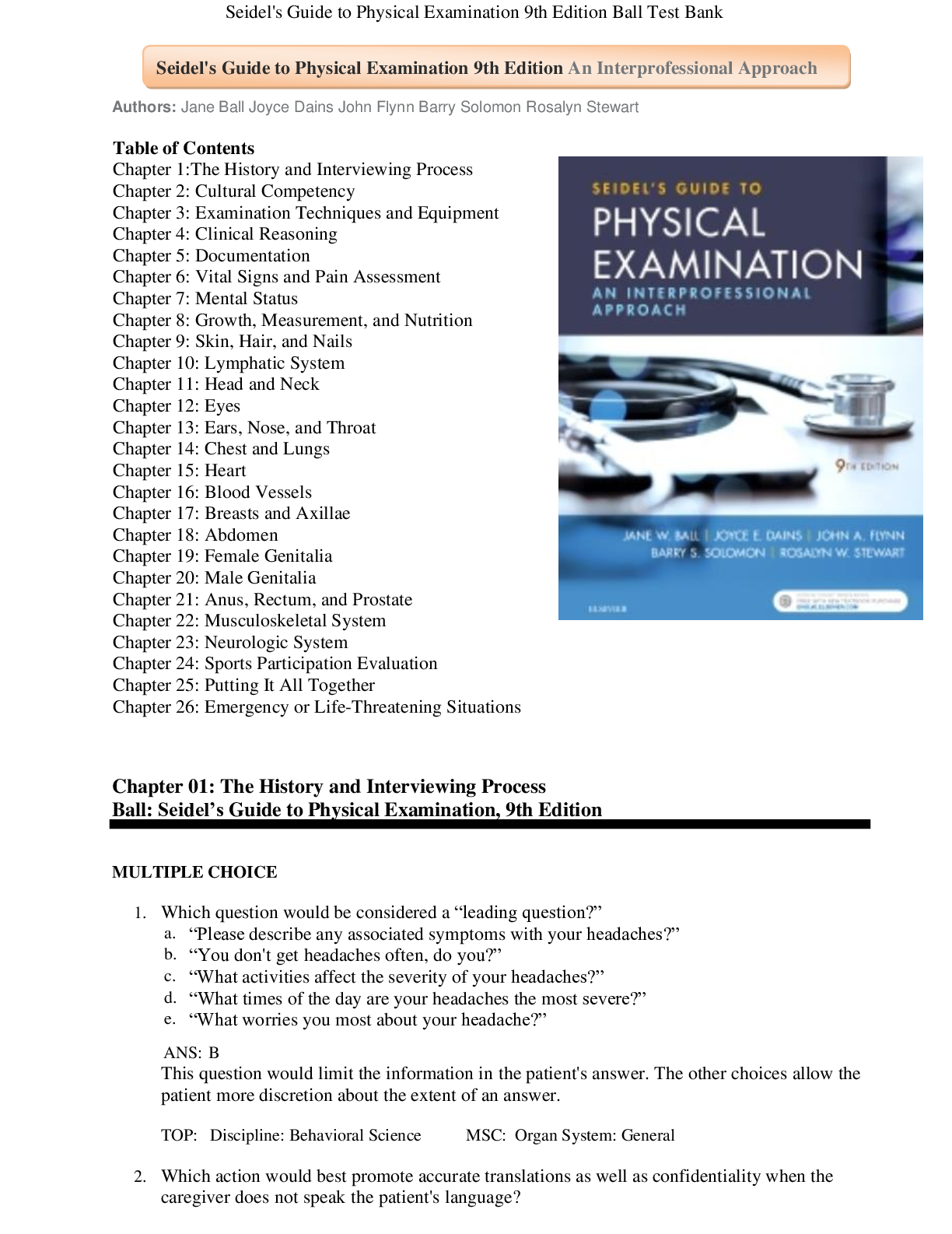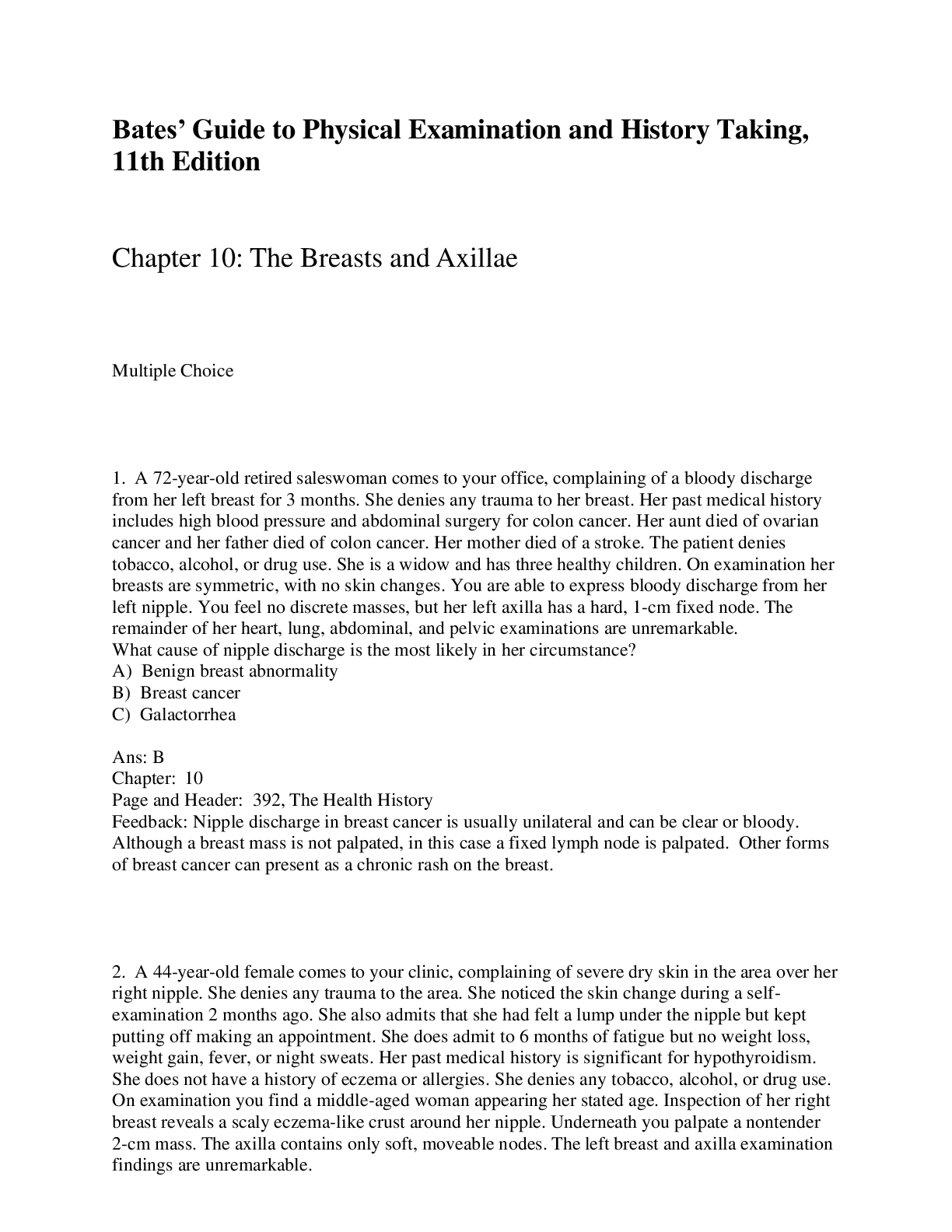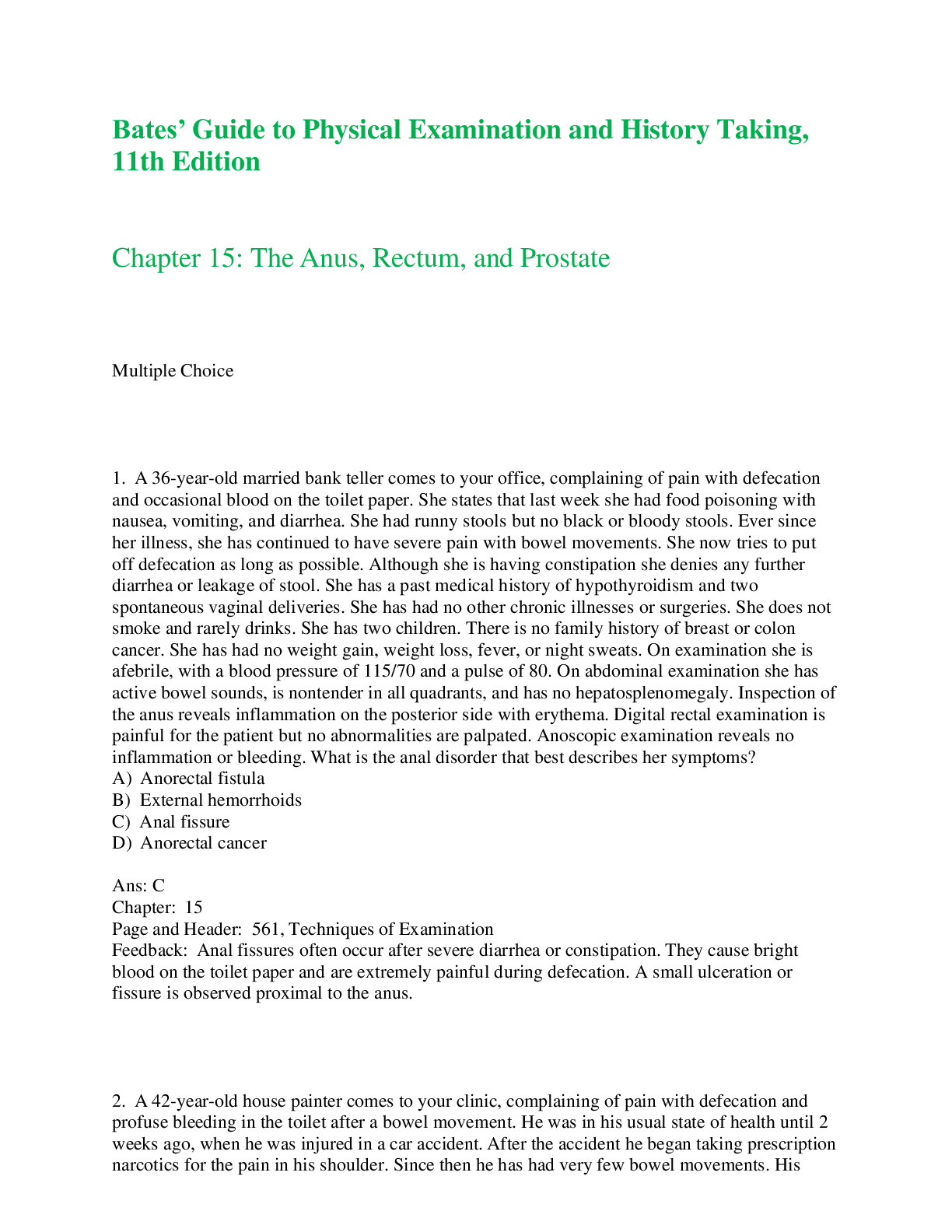*NURSING > EXAM > TEST BANK FOR BATES' GUIDE TO PHYSICAL EXAMINATION AND HISTORY TAKING 12TH EDITION BY BICKELY (All)
TEST BANK FOR BATES' GUIDE TO PHYSICAL EXAMINATION AND HISTORY TAKING 12TH EDITION BY BICKELY
Document Content and Description Below
Bates’ Guide to Physical Examination and History Taking, 12th Edition Chapter 9: The Cardiovascular System Multiple Choice 1. You are performing a thorough cardiac examination. Which of the follo... wing chambers of the heart can you assess by palpation? A) Left atrium B) Right atrium C) Right ventricle D) Sinus node Ans: C Chapter: 09 Feedback: The right ventricle occupies most of the anterior cardiac surface and is easily accessible to palpation. The other structures are less likely to have findings on palpation and the sinus node is an intracardiac structure. You may be able to diagnose abnormal rhythms caused by the sinus node indirectly by palpation, but this is less obvious. 2. What is responsible for the inspiratory splitting of S2? A) Closure of aortic, then pulmonic valves B) Closure of mitral, then tricuspid valves C) Closure of aortic, then tricuspid valves D) Closure of mitral, then pulmonic valves Ans: A Chapter: 09 Feedback: During inspiration, the closure of the aortic valve and the closure of the pulmonic valve separate slightly, and this may be heard as two audible components, instead of a single sound. Current explanations of inspiratory splitting include increased capacitance in the pulmonary vascular bed during inspiration, which prolongs ejection of blood from the right ventricle, delaying closure of the pulmonic valve. Because the pulmonic component is soft, you may not hear it away from the left second intercostal space. Because it is a low-pitched TEST BANK FOR BATES' GUIDE TO PHYSICAL EXAMINATION AND HISTORY TAKING 12TH EDITION BY BICKLEY NURSINGTB.COM N U R S I N G T B . C O M sound, you may not hear it unless you use the bell of your stethoscope. It is generally easy to hear in school-aged children, and it is easy to notice the respiratory variation of the splitting. 3. A 25-year-old optical technician comes to your clinic for evaluation of fatigue. As part of your physical examination, you listen to her heart and hear a murmur only at the cardiac apex. Which valve is most likely to be involved, based on the location of the murmur? A) Mitral B) Tricuspid C) Aortic D) Pulmonic Ans: A Chapter: 09 Feedback: Mitral valve sounds are usually heard best at and around the cardiac apex. 4. A 58-year-old teacher presents to your clinic with a complaint of breathlessness with activity. The patient has no chronic conditions and does not take any medications, herbs, or supplements. Which of the following symptoms is appropriate to ask about in the cardiovascular review of systems? A) Abdominal pain B) Orthopnea C) Hematochezia D) Tenesmus Ans: B Chapter: 09 Feedback: Orthopnea, which is dyspnea that occurs when the patient is lying down and improves when the patient sits up, is part of the cardiovascular review of systems and, if positive, may indicate congestive heart failure. 5. You are screening people at the mall as part of a health fair. The first person who comes for screening has a blood pressure of 132/85. How would you categorize this? A) Normal B) Prehypertension C) Stage 1 hypertension TEST BANK FOR BATES' GUIDE TO PHYSICAL EXAMINATION AND HISTORY TAKING 12TH EDITION BY BICKLEY [Show More]
Last updated: 2 years ago
Preview 1 out of 14 pages

Buy this document to get the full access instantly
Instant Download Access after purchase
Buy NowInstant download
We Accept:

Reviews( 0 )
$13.00
Can't find what you want? Try our AI powered Search
Document information
Connected school, study & course
About the document
Uploaded On
May 28, 2021
Number of pages
14
Written in
Additional information
This document has been written for:
Uploaded
May 28, 2021
Downloads
0
Views
102

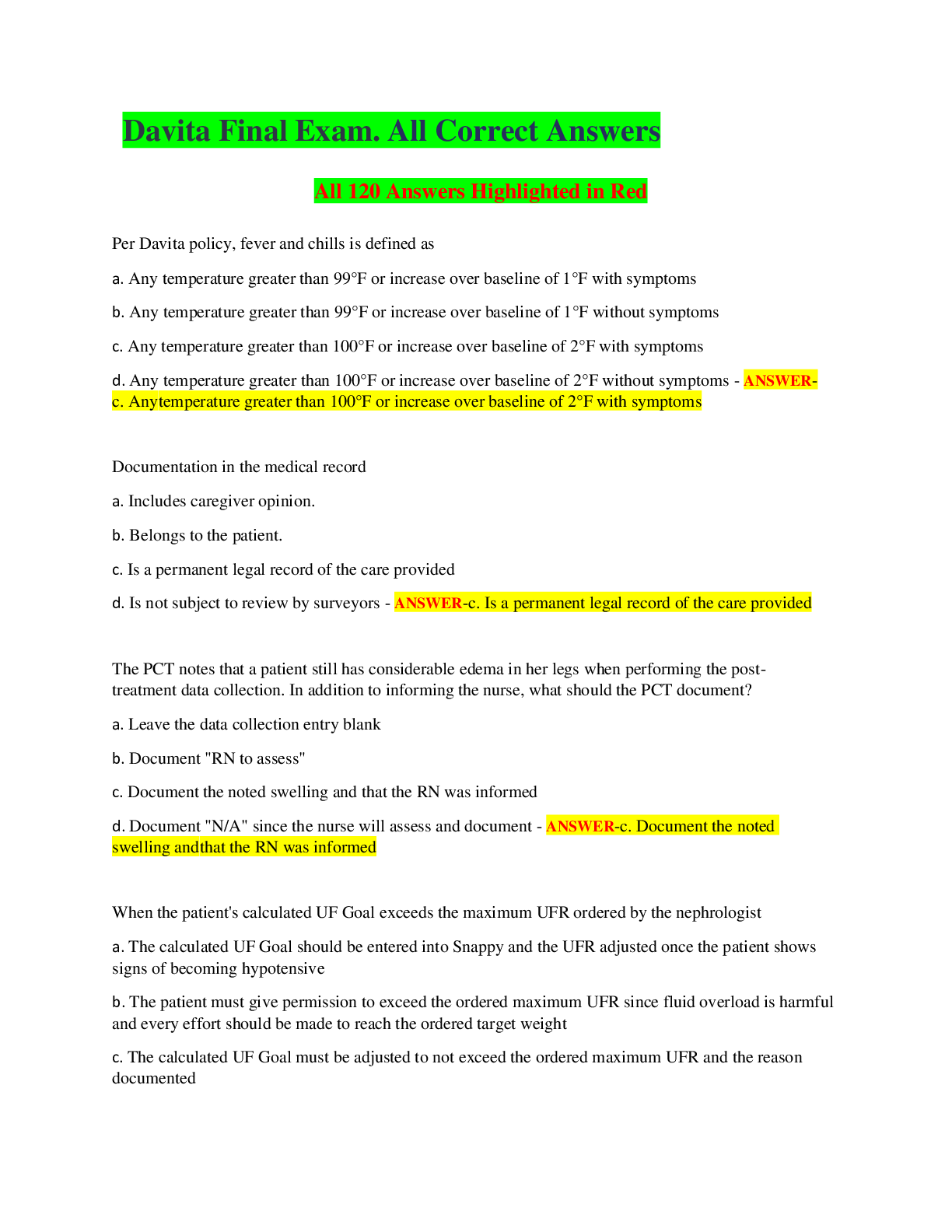


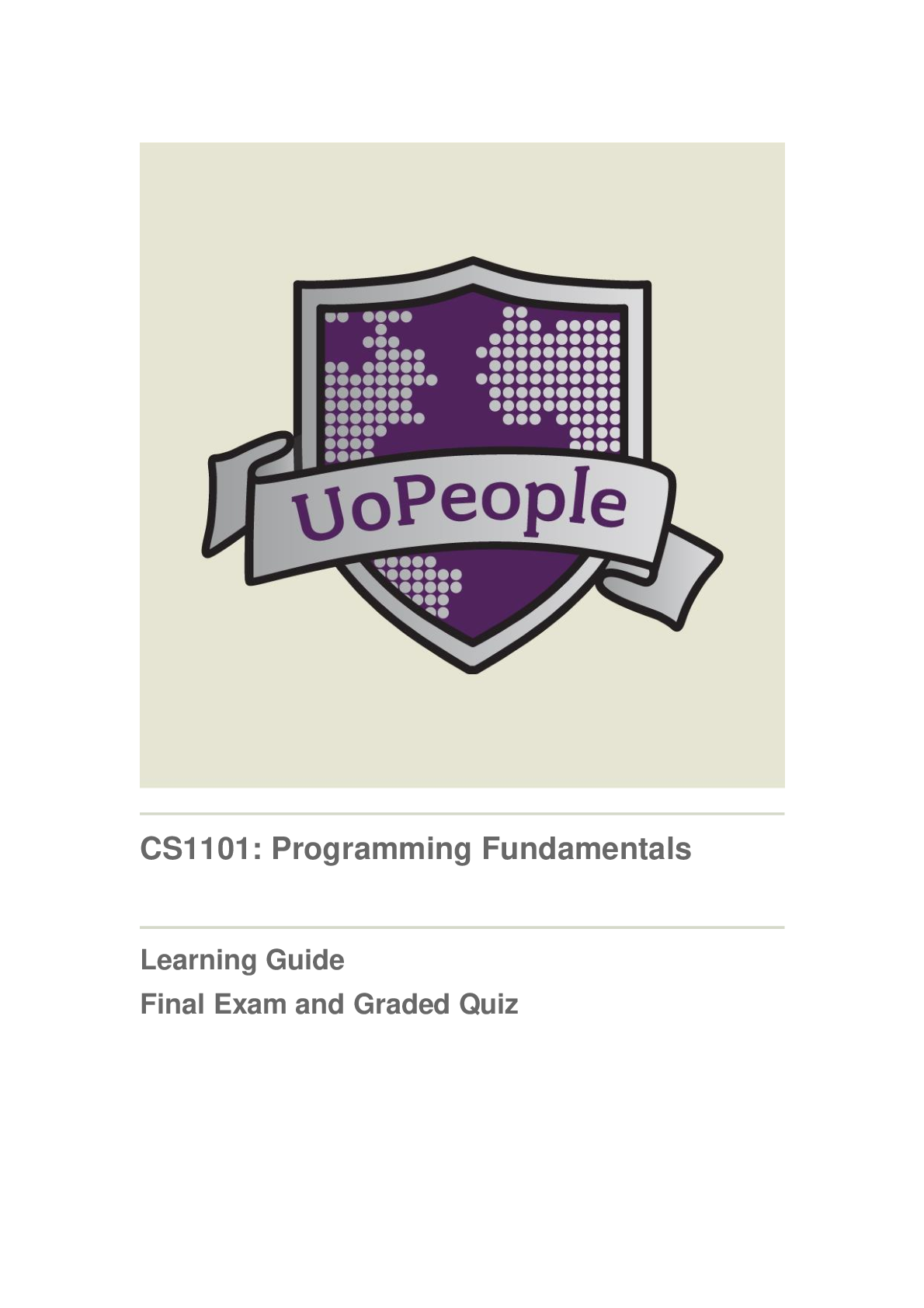









.png)



